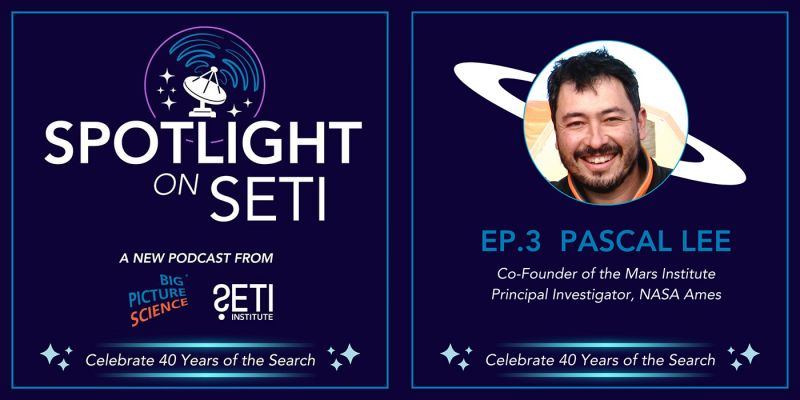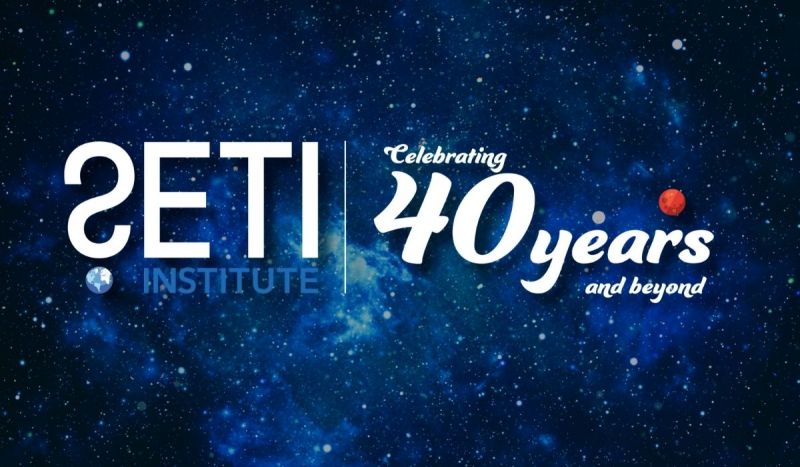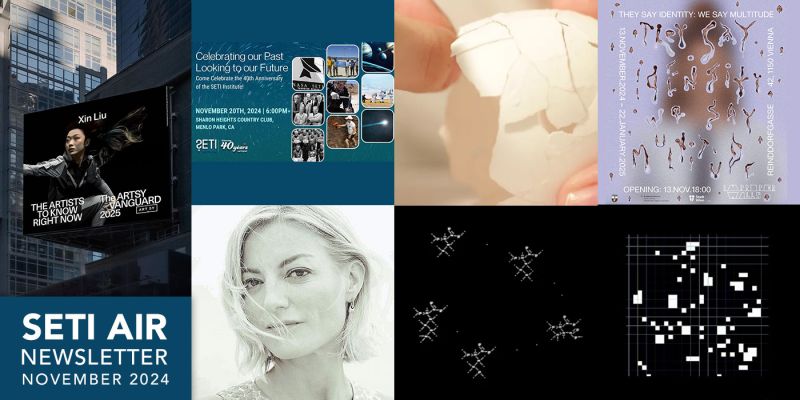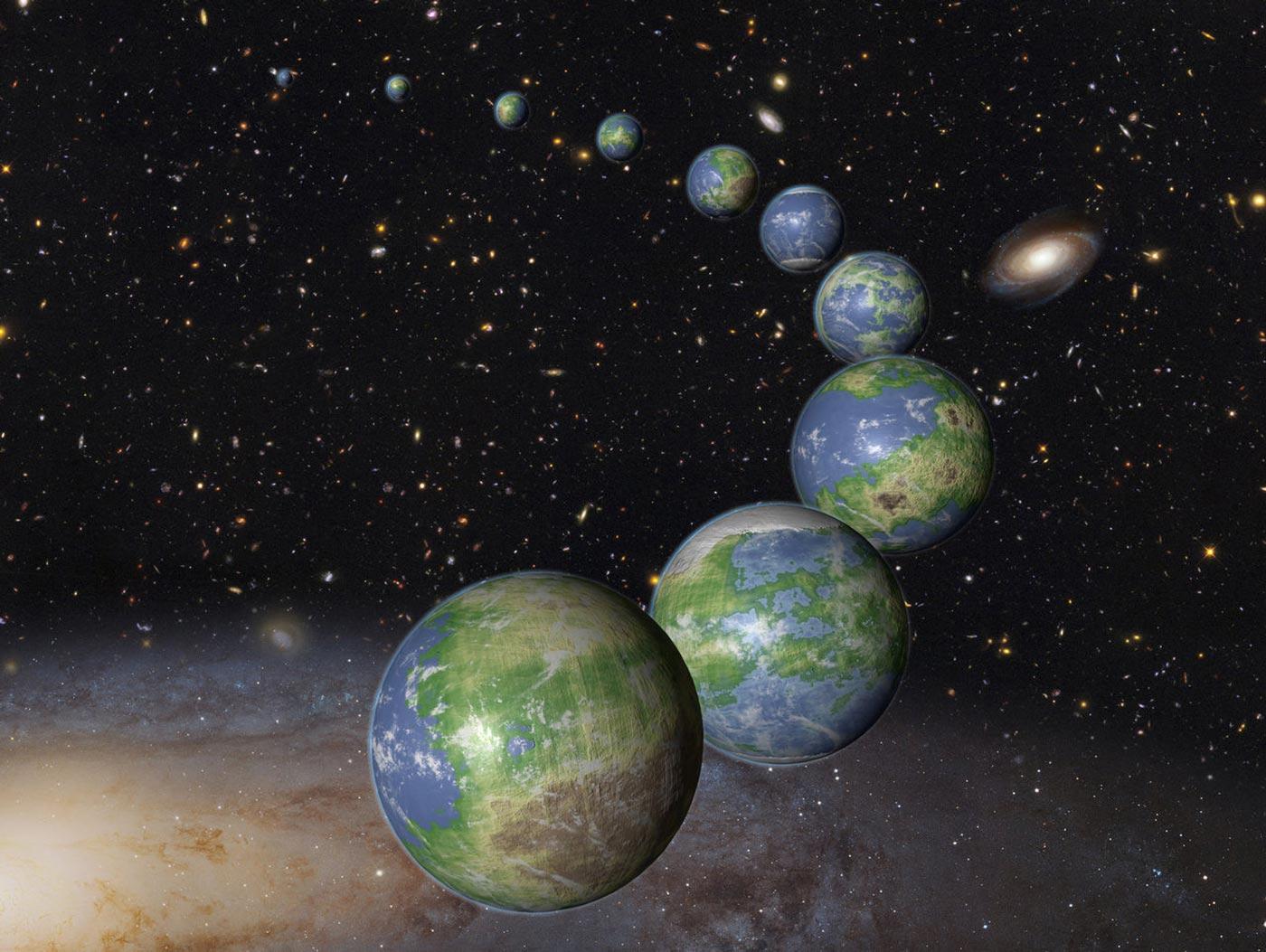
The National Academies of Sciences, Engineering, and Medicine brought together a panel of experts to discuss the field of astrobiology and its priorities going forward. Victoria Meadows, recipient of the SETI Institute’s Drake Award, serves on the Committee on Astrobiology Science Strategy for the Search for Life in the Universe, which put together the report.
Space.com noted the sea-change in how the field of astrobiology is now regarded, and its relationship to the field of SETI. Jill Tarter, co-founder of the SETI Institute and Chair Emeritus for SETI Research, has long advocated for the serious consideration of searching for signs of technologically-advanced life in the big picture of astrobiology:
The report also marks the reintroduction of the search for extraterrestrial intelligence, or SETI, into mainstream research. Cut off from NASA funding since the 1990s, the field seeks signals of technologically advanced civilizations — searching for life like us, rather than single-celled organisms.
"It was just really frustrating and scientifically unsupportable to say that a particular piece of research was not part of the astrobiology picture," Jill Tarter, a retired astrobiologist at the independent nonprofit SETI Institute who wasn't on the committee, told Space.com. "At least it's now legitimate and discussed as part of the whole astrobiology umbrella suite of investigations."
The report highlighted the need for collaborative work, highlighting the groundbreaking work of the research accelerator pioneered by the SETI Institute, the Frontier Development Lab (FDL). It also noted the increased interest in technosignature research.
- Space.com: Here's What the Search for Life Needs Next, Scientists Say
- National Academies of Sciences, Engineering and Medicine: An Astrobiology Strategy for the Search for Life in the Universe

New Fast Radio Bursts Discovered by Australian Researchers
Fast Radio Bursts (FRBs) are high-energy pulses of radio emissions that last only milliseconds and appear to come from beyond the Milky Way; their exact nature and origin is unknown, and they’ve been a puzzle for scientists since their discovery in 2007. In September, researchers at Breakthrough Listen announced the detection of 72 new FRBs after applying machine learning techniques to analyze data already collected by the Green Bank Telescope in West Virginia. More recently, a team of scientists announced the discovery of 20 more FRBs detected through sky surveys with the Australian Square Kilometre Array Pathfinder (ASKAP) telescope. Newsweek turned to Andrew Siemion, Bernard M. Oliver Chair for SETI Research at the SETI Institute, for comment:
Andrew Siemion, Director of the Berkeley SETI Research Center and Principal Investigator on Breakthrough Listen, commented on the study. “The latest results from the ASKAP FRB team are very exciting,” he told Newsweek. “In addition to nearly doubling the number of known FRB sources, this work reveals the existence of a population of very bright FRB sources that had been expected, but not known, to exist.”
These results mark a huge step forward in learning about a phenomenon whose nature prompts far more questions than answers so far.
 Infected: Seth Shostak on Monstrous Alien Microbes
Infected: Seth Shostak on Monstrous Alien MicrobesScience fiction is rife with hostile aliens, often in the form of fleets of invading spacecraft. A few – like the recent film, “Venom” – portrays the threat as an infection or parasite. The menacing extraterrestrial is a comic book antihero from the Marvel Universe, a being known as the Symbiote until it finds a human host, becoming the eponymous Venom (and then, naturally, wreaking havoc). Other films have explored this concept (such as the well-known “Alien” franchise), and each has had a slightly different take. Space.com spoke to Seth Shostak, senior astronomer at the SETI Institute, about the threat of alien parasites crashing your dinner party:
Each of these microbe examples is unique, but they're all extremely unlikely, said the SETI (Search for Extraterrestrial Intelligence) Institute's Seth Shostak. Shostak, who is the Institute's senior astronomer, told Space.com that bacteria that infect humans on Earth are highly adapted to our own biological systems, but only because 4 billion years of evolution link our species. Alien life — even if it is carbon-based and even if it needs water like Earth life does — would have grown up in a different ecosystem.
"Even on Earth, we get diseases that your dog won't get," Shostak said. Only a handful of viruses can even make the jump between species, let alone between planets, he continued. "They tend to be fairly species-specific. For example, you never see an elephant with a cold."
We might actually be the greater threat to microbial life on other worlds, should we encounter it. Mars, for example, is known to have the building blocks of life and possibly liquid water, and future exploration could lead to contamination if we introduce germs from Earth:
"Mars is a tough environment," Shostak said; the high levels of radiation on the planet's surface and its extremely dusty environment are some examples of that toughness. However, Shostak said, "there are some bacteria on Earth that could survive if they got to liquid water on Mars."
As missions to Mars develop, consideration must be given both to protecting our planet, and those we explore.
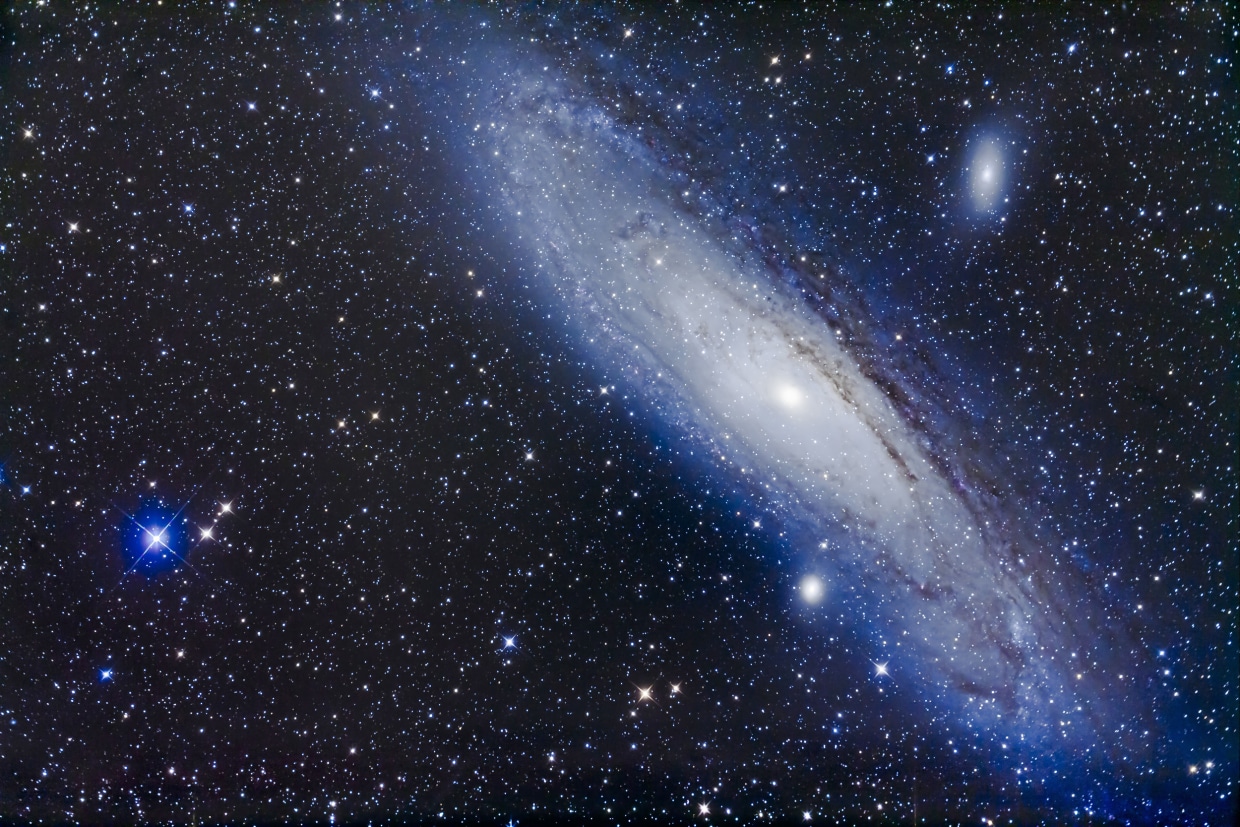 Signs of Light
Signs of LightA promising new approach in the search for extraterrestrial signals has been proposed by physicists at the University of California, Santa Barbara. They plan to look for powerful artificial light sources from advanced extraterrestrial beings, that would, theoretically, be brighter than the stars. By repeatedly taking photos of the Andromeda galaxy, and then comparing the photos, they hope to detect any new brightness that may appear. Why the Andromeda galaxy? Seth Shostak, senior astronomer at the SETI Institute, explains in a piece he wrote for NBC News MACH:
The reason is simple: choosing a nearby galaxy means the project can quickly reconnoiter a vast swath of extraterrestrial territory.
Andromeda, like the Milky Way, is thought to contain a trillion or so planets, a fact that led the Santa Barbara physicists to inventively dub their effort the Trillion Planet Survey. Most conventional searches for E.T. look for signals from nearby star systems one at a time. By examining an entire galaxy at once, the Santa Barbara scientists aim to greatly increase the chance of finding something.
The survey process is automated and can continue as long as it maintains support, but of course it still relies on the hope that detectable signals exist. Nonetheless, Shostak remarks, “few searches have eyed as much cosmic real estate as the Trillion Planet Survey plans to do”. They might indeed catch a surprise ray of light.
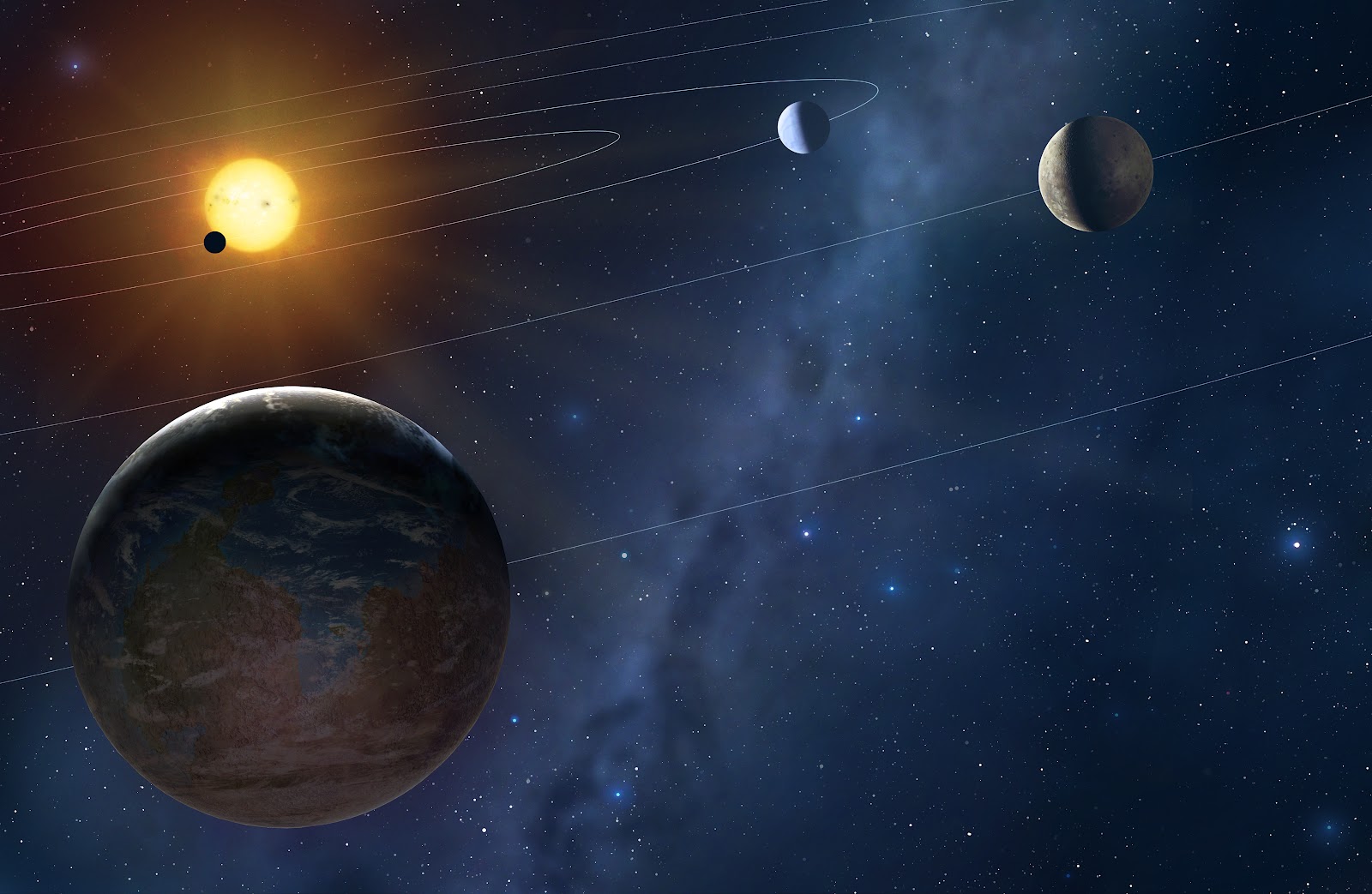 Remembering Carl Sagan
Remembering Carl SaganPerhaps no single figure is so remembered for inspiring in our hearts with the wonder of science as late astronomer Carl Sagan – known by many as a science educator and for his “Cosmos” TV series, Sagan also made significant scientific contributions of his own. Space.com remembered his work and legacy, in particular his contributions to the search for extraterrestrial intelligence:
Sagan helped lay the groundwork for two new scientific disciplines: planetary science and exobiology, or the study of potential life on other planets. He co-founded and served as the first president of The Planetary Society, an organization dedicated to inspiring and involving the public in space exploration. And he promoted the Search for Extraterrestrial Intelligence (SETI) Institute, where he served as a trustee.
Sagan was also known for his fictional depictions of real science:
Although the majority of Sagan's work was nonfiction, he used fiction to present scientific principles in his 1985 novel "Contact" (Simon & Schuster, 1985). The story revolved around interactions between the human race and an advanced civilization of extraterrestrials. The novel sold over a million copies in its first two years of publication, and in 1997, it was released as a major motion picture starring Jodi Foster as main character Ellie Arroway (who was inspired by real-life SETI astronomer Jill Tarter).
Jill Tarter co-founded the SETI Institute, which today carries on Sagan’s legacy of exploration and outreach. As Sagan once said, according to his 1996 obituary:
" Are we an exceptionally unlikely accident or is the universe brimming over with intelligence? (It's) a vital question for understanding ourselves and our history."
You can read about the SETI Institute’s Carl Sagan Center here.
- Space.com: Carl Sagan: Cosmos, Pale Blue Dot & Famous Quotes
- SETI.org: Carl Sagan Center
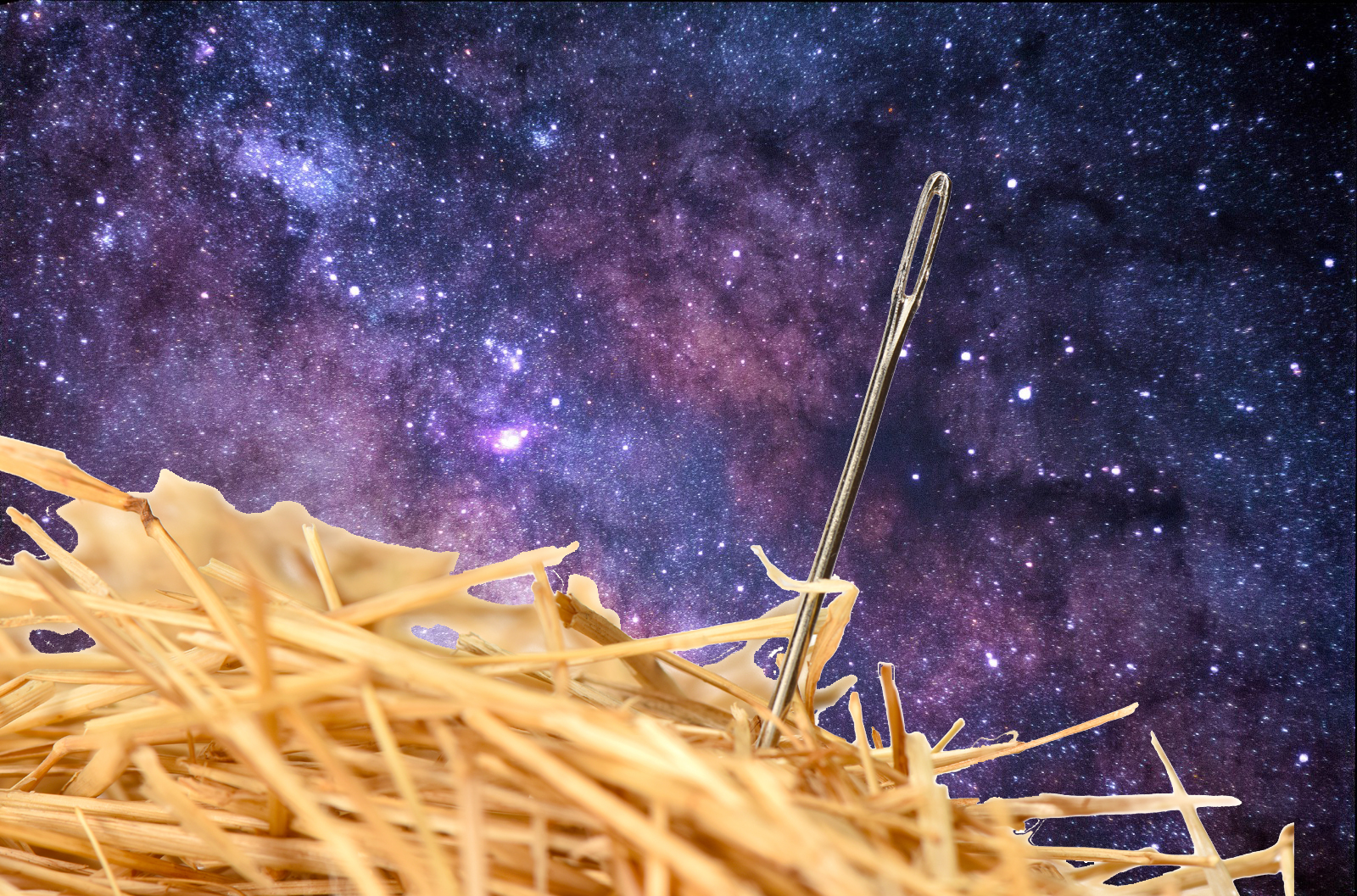 E.T., the Needle in the Cosmic Haystack
E.T., the Needle in the Cosmic HaystackAs interest in the field of SETI research grows, a question persists – where is everybody else? A new paper by researchers from Pennsylvania State University takes a look at the question of how much ground the search has covered so far. The conclusion? Not much.
Motherboard discussed the report, noting that Jill Tarter, Chair Emeritus for SETI Research at the SETI Institute, has given the question a great deal of thought:
Jill Tarter, a radio astronomer with the SETI Institute, for instance, has proposed a “nine-dimensional haystack” in which SETI searches range across the three spatial dimensions, time, two polarization dimensions of the radio signal, the central frequency of the radio signal, the sensitivity of receivers, and the way information is encoded in the signal.
Using the nine-dimensional haystack, Tarter has likened all SETI searches to date to extracting a cup of water from all of Earth’s oceans and looking for evidence that fish exist only in that cup. When the Penn State researchers plugged eight parameters into their tool, they found that all the SETI searches to date was more like looking for life in a hot tub-sized sample of ocean water. Even though this is significantly larger than a glass of water, it’s still small in the grand scheme of things and the researchers note that these types of calculations can be useful to rebut the misconception that “SETI can be said to have ‘failed’ to find what it seeks.”
For now, we cannot prove extraterrestrials exist nor conclude they don’t exist. What we do know is that we’ve barely begun to search.
- Motherboard: If the Universe Is the Ocean, We've Only Searched for Aliens in a Hot Tub
- Business Insider: Smart aliens might live within 33,000 light-years of Earth. A new study explains why we haven't found them yet.
- Technology Review: The 8-dimensional space that must be searched for alien life
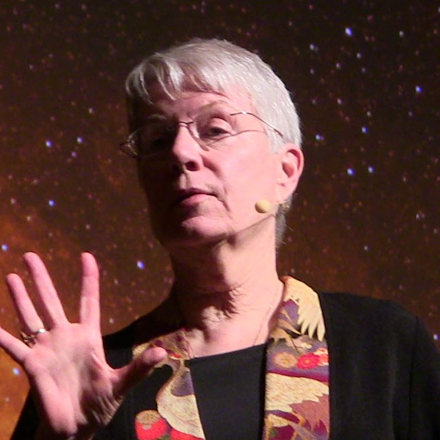 Jill Tarter’s Cosmic Perspective on Northern Public Radio
Jill Tarter’s Cosmic Perspective on Northern Public RadioJill Tarter, pioneering co-founder of the SETI Institute and Chair Emeritus for SETI Research, appeared on Northern Public Radio to describe her work as an astronomer looking for evidence of intelligent life beyond Earth. Tarter described why “intelligence” is a tricky term in this context:
"We certainly don't know how to detect intelligence per se at a distance," Tarter explained. "So what it is actually all about is using technology as a proxy for intelligence. So, we've been trying to figure out ways to find evidence of someone else using a technology in ways that modify their environment that we might detect remotely. And yes it started with radio, and then went into optical."
Tarter also presented the lecture "A Cosmic Perspective: Searching for Aliens, Finding Ourselves" at Fermilab's Ramsey Auditorium.
- Northern Public Radio: Astronomer Who Inspired 'Contact' Character Bringing Cosmic Message To Fermilab
In last week’s episode, what you don’t know about animals will surprise you in Creature Discomforts. On our previous week’s episode, enjoy an encore of Wonder Women, celebrating the women who battle sexism to pursue careers in science.
Last week on Facebook Live, a peek at the Berkeley SETI Research Center with SETI Institute Bernard M. Oliver Chair for SETI Research, Andrew Siemion. On our previous episode of Facebook Live, SETI Institute CEO Bill Diamond and research scientist Michael Busch discussed Ryugu, the Hayabusa 2 spacecraft, and the MASCOT rover. Videos of all past Facebook Live events can be found on our Facebook page: https://www.facebook.com/SETIInstitute/
- Science with HabEx: UV to Near-Infrared Space Astronomy in the 2030s: October 15-16, New York, NY SETI Institute Senior Scientist Franck Marchis will be an invited speaker
- SETI Talks: October 16, Menlo Park, CA From Cowboys to Communities: Changing the Face of Space Exploration The SETI Institute’s Margaret Race will be joined by Jan Millsapps, Professor Emeritus of Cinema at San Francisco State University and Brian Patrick Green, director of technology ethics at the Markkula Center for Applied Ethics at Santa Clara University
- 2020 Landing Site for Mars Rover Mission: October 16-18, Glendale, CA SETI Institute scientist J.R. Skok will present about the Northeast Syrtis landing site
- SpaceTalks: October 20 Jasper, Alberta Canada Seth Shostak will participate in the panel discussion
- Division of Planetary Sciences Meeting: October 21-26, Knoxville, TN SETI Institute scientists are expected to participate
- VB Summit 2018: October 22-23, Mill Valley, CA Andrew Siemion, Bernard M. Oliver Chair for SETI at the SETI Institute will present “Forget Building Your AI Project. Buy It Off the Shelf.”
- NASA’s Kepler & K2 Missions: October 24, Bremerton, WA Jeff Coughlin, SETI Institute scientist and Director of the K2 Science Office, will giving a public talk at Olympic College in Bremerton, WA.
- Division for Planetary Sciences (DPS) 50th Annual Meeting: October 21-26, Knoxville, TN Numerous SETI Institute Scientists will be participating including: Chloe Beddingfield, Ross Beyer, Michael Busch, Richard Cartwright, Matija Ćuk, Cristina Dalle Ore, Paul Estrada, Robert French, Pamela Harman, Franck Marchis, Stuart Pilorz, Alessandra Ricca, Joseph Roser, Mark Showalter, Matthew Tiscareno, and Orkan Umurhan.
- The Undiscovered: October 26, Cambridge, MA Jill Tarter, Chair Emeritus for SETI Research at the SETI Institute will be a keynote speaker
- Toward an All-Sky Radio SETI Telescope: October 29-31, Manchester, UK Jill Tarter, Chair Emeritus for SETI Research at the SETI Institute is a member of the Scientific Organizing Committee
- 2018 Solar Dynamics Observatory Science Workshop: Catalyzing Solar Connections: October 29-November 2, Ghent, Belgium SETI Institute Research Scientist Meng Jin is a member of the Science Organizing Committee
- Earth Impacting Debris from Comets and Asteroids: November 9, Los Angeles, CA: Talk presented by SETI Institute scientist Peter Jenniskens at UCLA
- World Premiere – The Sound of Silence: November 10, Brooklyn, NY Concert featuring new work composed by SETI Artist-in-Residence Felipe Pérez Santiago and inspired by the work of Jill Tarter, Chair Emeritus for SETI at the SETI Institute
- Cassini’s Spectacular Final Year at Saturn: November 13, Palo Alto, CA SETI Institute Senior Research Scientist Matthew Tiscareno will present

